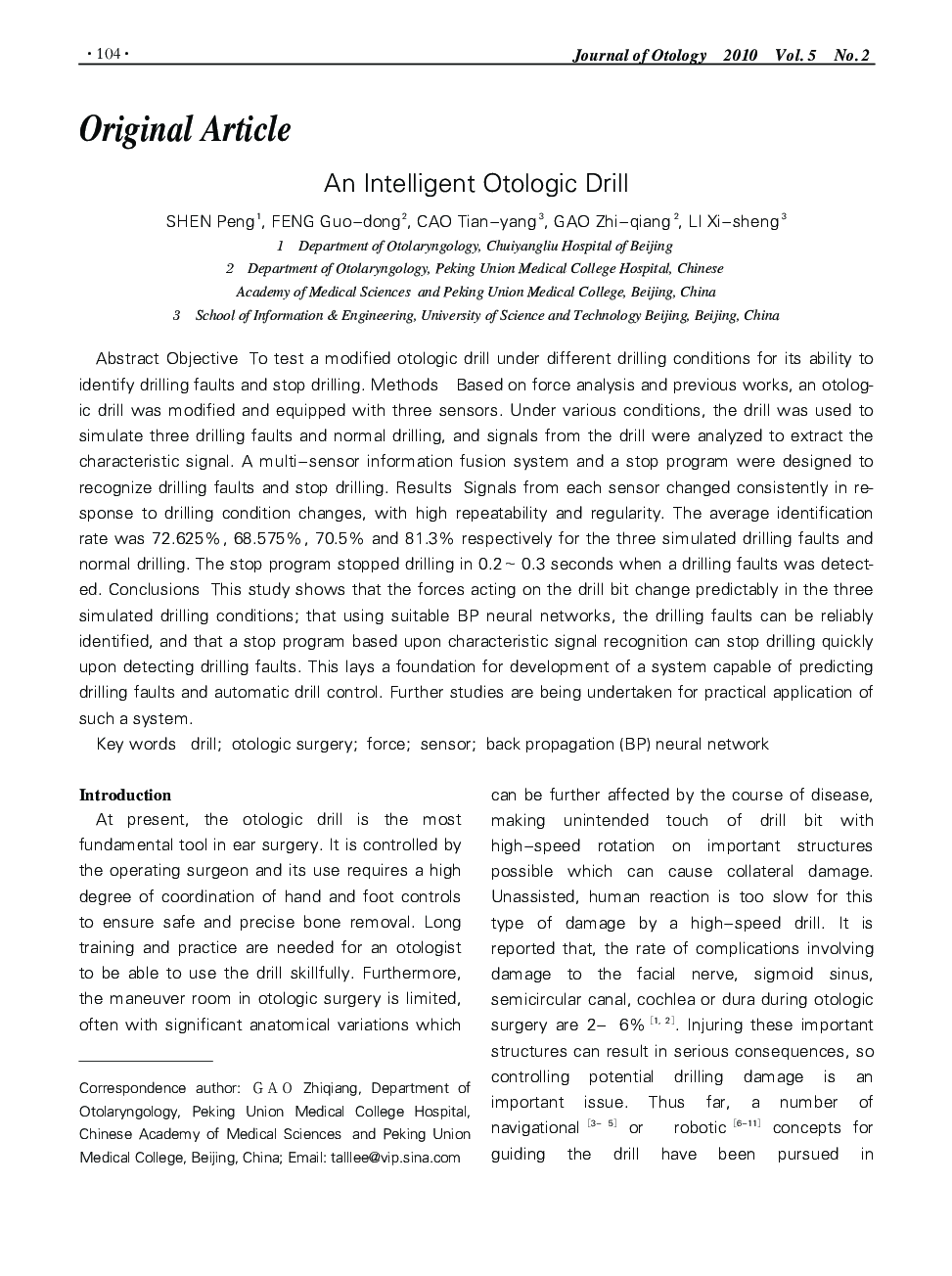| Article ID | Journal | Published Year | Pages | File Type |
|---|---|---|---|---|
| 4116788 | Journal of Otology | 2010 | 7 Pages |
ObjectiveTo test a modified otologic drill under different drilling conditions for its ability to identify drilling faults and stop drilling.MethodsBased on force analysis and previous works, anotologic drill was modified and equipped with three sensors. Under various conditions, the drill was used to simulate three drilling faults and normal drilling, and signals from the drill were analyzed to extract the characteristic signal. A multi–sensor information fusion system and a stop program were designed to recognize drilling faults and stop drilling.ResultsSignals from each sensor changed consistently in response to drilling condition changes, with high repeatability and regularity. The average identification rate was 72.625%, 68.575%, 70.5% and 81.3% respectively for the three simulated drilling faults and normal drilling. The stop program stopped drilling in 0.2 ~ 0.3 seconds when a drilling faults was detected.ConclusionsThis study shows that the forces acting on the drill bit change predictably in the three simulated drilling conditions; that using suitable BP neural networks, the drilling faults can be reliably identified, and that a stop program based upon characteristic signal recognition can stop drilling quickly upon detecting drilling faults. This lays a foundation for development of a system capable of predicting drilling faults and automatic drill control. Further studies are being undertaken for practical application of such a system.
